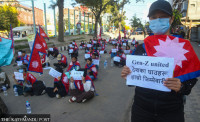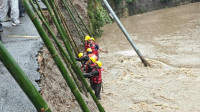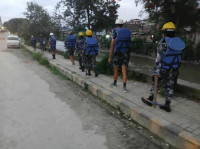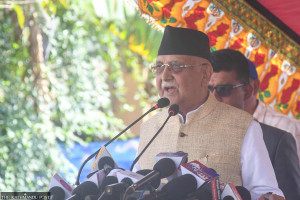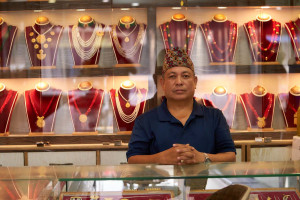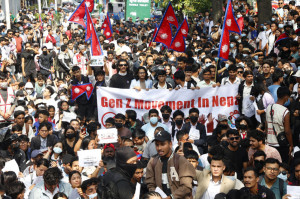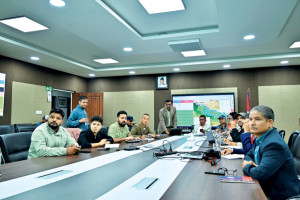Valley
Hard work, struggle help Bhandari reach pinnacle
From a student leader to the first female head of the state, Bidhya Devi Bhandari has come a long way.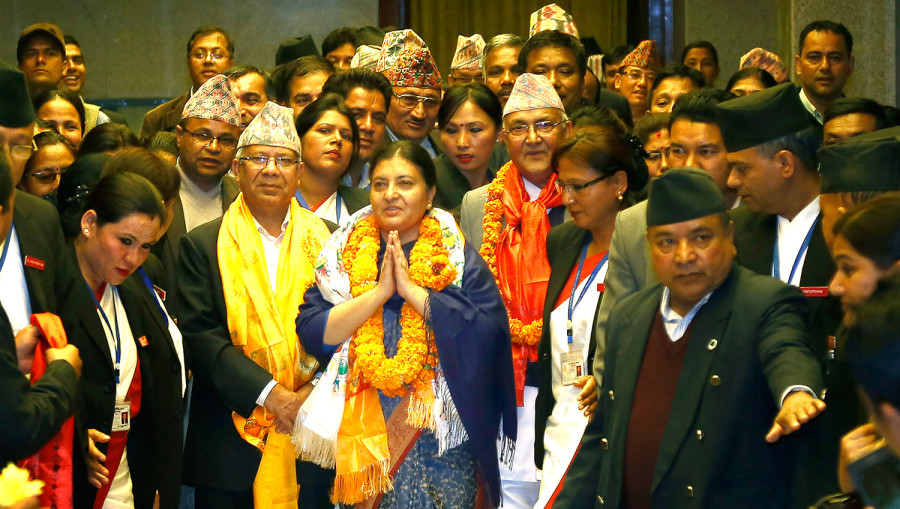
From a student leader to the first female head of the state, Bidhya Devi Bhandari has come a long way. Her ascent to the Presidential post marks the pinnacle of her long political career that started in the late 70s.
Though she joined politics as an activist of then Youth Leauge of Communist Party of Nepal, her active political journey, however, started when she received party membership of the then CPN (ML) in 1980.
In 1982, she tied the knot with Madan Bhandari who later became general secretary of the CPN (UML) following unification of CPN (ML) and CPN (Marxist) after the restoration of multi-party democracy in 1990. Politics took back seat following the marriage.
It was Madan Bhandari’s mysterious death in 1993 that forced Bidhya to start her second innings in politics. She was little known until she registered her victory from Kathmandu Constituency-1 in the parliamentary by-election in 1993, defeating then NC president and former prime minister Krishna Prasad Bhattarai. Victory against NC leader Daman Nath Dhungana from Kathmandu-2 in 1994 mid-term election and 1999 parliamentary election established her as an influential leader within the UML.
Her critic compares Bhandari’s rise to sympathy shown towards her after the demise of her husband, who was a charismatic communist leader. However, her party colleagues refute this charge. They see Bhandari as a leader emerged from hard work and struggle. “Few opponents may link her success towards sympathy shown by people after her husband’s demise but that is not true. The fact that she has been elected thrice from Kathmandu in parliamentary elections defeating top leaders proves her mettle,” said UML Secretary Pradeep Gyawali.
Though she has been criticised of late, for her remarks on Nepal’s feminist movement, she was instrumental in reserving 33 percent of seats in state mechanism for women. As a lawmaker in 2006 Interim Parliament, she submitted a parliamentary motion to ensure such reservation. Later, the motion was endorsed unanimously and 33 percent of lawmakers were women in 2008’s CA election. The government has been enforcing one-third representation of women in all state mechanism.
Despite her loss in the first CA election, she maintained her popularity in the party and was elected as the vice-chairperson through 2009’s Butwal General Convention.
She also held the post of Defense Minister in the Madhav Kumar Nepal-led Cabinet when the government pushed the integration of Maoist combatants into the national army. “She successfully handled the ministry when relation between the government and Maoist party was at its low,” Gyawali said.
Bhandari was elected to the second CA in 2013 under the proportional electoral system. She also retained her vice-chairperson position in the party’s general convention last year and is considered close to UML Chairman and Prime Minister KP Sharma Oli. In the recent days, she was the only female leader attending the high-level political meetings.
Bhandari is taking the charge of head of the state at a time when Nepali society is deeply divided. A section of Madhes-based parties boycotted Wednesday’s presidential election. Unifying the fragmented society, effective facilitation for the implementation of new constitution and providing statesmanship in crisis period will be a tough challenge for the new President. “Unifying the divided society and providing guardianship to ease public life by ending unofficial blockade imposed by India will remain challenges for her. But I am confident that she will be successful,” Gyawali said.




 21.12°C Kathmandu
21.12°C Kathmandu